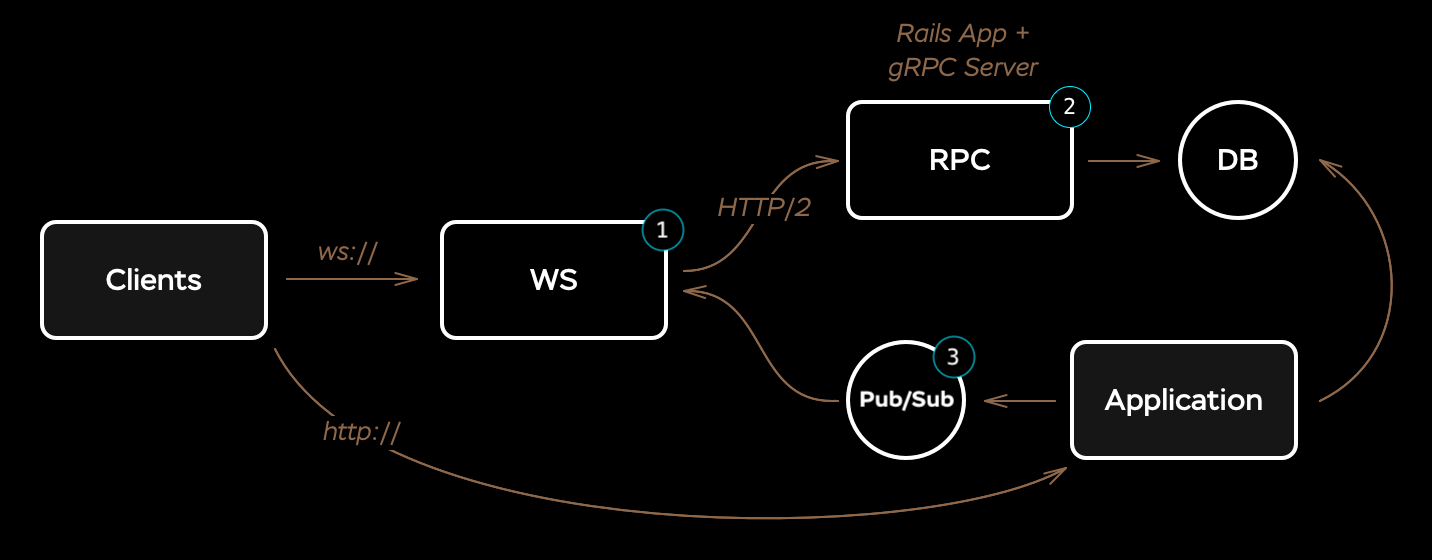Architecture
Overview


AnyCable WebSocket server (1) is responsible for handling clients, or sockets. That includes:
- low-level connections (sockets) management
- subscriptions management
- broadcasting messages to clients
WebSocket server should include gRPC client built from AnyCable rpc.proto.
RPC server (2) is a connector between the Ruby application (e.g. Rails) and WebSocket server. It’s an instance of your application with a gRPC endpoint which implements rpc.proto.
This server is a part of the anycable CLI.
We use a Pub/Sub service (3) to send messages from the application to the WS server, which then broadcasts the messages to clients.
See the list of supported broadcast adapters.
State management
AnyCable's is different to the most WebSocket servers in the way connection states are stored: all the information about client connections is kept in WebSocket server; an RPC server operates on temporary, short-lived, objects passed with every gRPC request.
That means, for example, that you cannot rely on instance variables in your channel and connection classes. Instead, you should use specified state objects, provided by AnyCable (read more about channel states).
A client's state consists of three parts:
- connection identifiers: populated once during the connection, read-only (correspond to
identified_byin Action Cable); - connection state: key-value store for arbitrary connection metadata (e.g., tagged logger tags stored this way);
- channel states: key-value store for channels (for each subscription).
This is how AnyCable manages these states under the hood:
- A client connects to the WebSocket server,
ConnectRPC is made, which returns connection identifiers and the initial connection state. All subsequent RPC calls contain this information (as long as underlying HTTP request data). - Every time a client performs an action for a specific channel, the channel state for the corresponding subscription is provided in the RPC payload.
- If during RPC invocation connection or channel state has been changed, the changes are returned to the WebSocket server to get merge with the full state.
- When a client disconnects, the full channel state (i.e., for all subscriptions) is included into the corresponding RPC payload.
Thus, the amount of state data passed in each RPC request is minimized.
Restoring state objects
A state is stored in a serialized form in WebSocket server and deserialized (lazily) during each RPC request (in Rails, we rely on GlobalID for that).
This results in a slightly different behaviour comparing to persistent, long-lived, state.
For example, if you use an Active Record object as an identifier (e.g., user), it's reloaded in every RPC action it's used.
To use arbitrary Ruby objects as identifiers, you must add GlobalID support for them (see AnyCable setup demo).